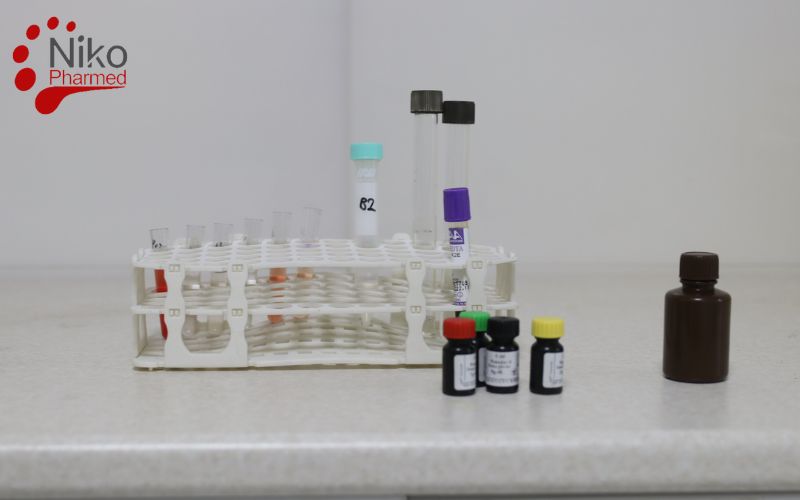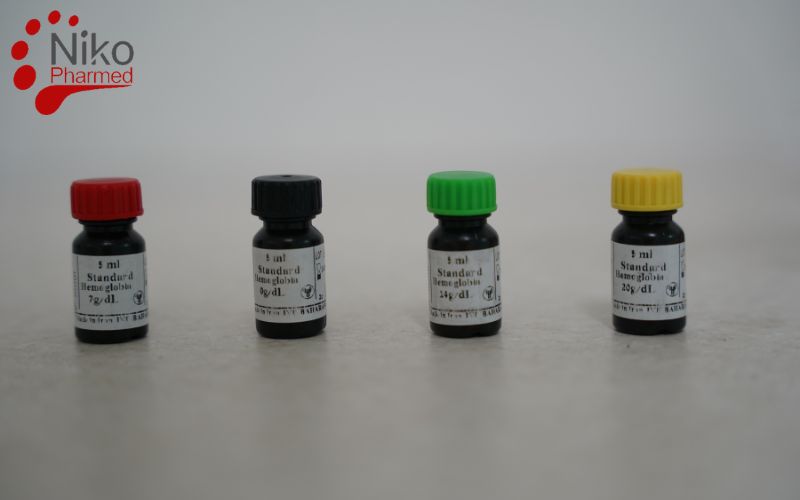What is Hemocompatibility Testing?
Hemocompatibility Testing is a critical assessment to evaluate the interaction between medical devices and blood, ensuring safety and biocompatibility for products intended for blood-contacting applications. This test measures key parameters such as hemolysis, thrombogenicity, and complement activation, in compliance with ISO 10993-4 standards.
Hemocompatibility Testing is a vital element of the overall biocompatibility assessment for blood‑contacting devices and is often conducted together with Pyrogenicity Testing and Acute Systemic Toxicity Testing to provide comprehensive safety data.
Scope and Rationale
ISO 10993-4 provides a risk-based framework to evaluate the potential blood interactions of medical devices. This includes contact with circulating blood, blood components, or bone marrow, whether via intravascular, extracorporeal, or implantable applications. The testing strategy aligns with the overall biological risk management process outlined in ISO 10993-1.
Key Hemocompatibility Endpoints
The standard outlines five primary categories of blood interaction to be assessed, each representing a distinct mechanism of toxicity:
- Hemolysis – The rupture of erythrocytes leading to the release of hemoglobin. Assessed using direct and indirect contact assays in vitro (e.g., ASTM F756).
- Coagulation (Clotting) – Evaluation of thrombogenicity, including partial thromboplastin time (PTT), prothrombin time (PT), and platelet activation/aggregation.
- Platelet response – Platelet adhesion, activation, and aggregation analysis, which can be done via flow cytometry or microscopy-based methods.
- Complement activation – Measurement of complement split products (e.g., C3a, SC5b-9) through ELISA techniques.
- Leukocyte activation – Determined through markers such as CD11b or cytokine release (e.g., IL-6, TNF-α), providing insights into immunoinflammatory potential.
Selection of Tests
Test selection is application-specific and considers:
- Type and duration of blood contact (e.g., transient vs. long-term),
- Intended use of the device (e.g., stents, dialysis membranes, catheters),
- Physical and chemical nature of the material,
- Device design and manufacturing process.
Risk assessment must justify omission or inclusion of any test category. In vitro methods are preferred where scientifically valid, and animal testing is reserved for endpoints not yet reliably modeled in vitro.
Methodological Considerations
- Controls: Both negative (inert) and positive (known reactive) material controls are required.
- Physiological relevance: All tests should aim to mimic in vivo conditions as closely as possible—this includes appropriate shear stress, temperature, pH, and anticoagulants.
- Validation and standardization: Assays must be validated per GLP or ISO 17025 where applicable, and adhere to referenced standards (e.g., ASTM, CLSI).
Integration with Risk Management
Hemocompatibility testing is not a stand-alone evaluation but part of a systematic biological risk assessment. Data derived from these tests should feed into the biological evaluation report (BER) and clinical risk-benefit analysis. Findings must be interpreted alongside other toxicological and material characterization data per ISO 10993-18 and -17.
Nikopharmed Hemocompatibility Testing Laboratory
Accreditation and Global Recognition in Hemocompatibility Testing
International Nikopharmad Laboratory is ISO/IEC 17025 certified and ILAC accredited, demonstrating our commitment to technical excellence and adherence to global quality management standards. These prestigious certifications ensure that our hemocompatibility testing results are recognized worldwide, meeting the regulatory requirements of authorities and supporting international compliance.
State-of-the-Art Infrastructure for Hemocompatibility Testing
Our advanced laboratory is equipped with high-precision in vitro analysis technologies, including flow cytometry, ELISA systems, and blood loop models that replicate physiological hemodynamics. We use validated testing methods and proprietary protocols to ensure analytical sensitivity, biological relevance, and regulatory compliance. All testing processes are aligned with ISO 10993-12 extraction standards, simulating real-world clinical conditions for reliable and accurate results.
Timely and Regulatory-Ready Hemocompatibility Test Reporting
In today’s fast-paced regulatory environment, obtaining accurate and reliable data quickly is essential. At Nikopharmad, our efficient project management and quality-controlled workflows ensure rapid turnaround times without compromising scientific rigor. Every test result is fully documented with traceable raw data, statistical analysis, and comprehensive, regulatory-ready reports that are ready for inclusion in global submission dossiers.
Ensuring Data Security and Confidentiality in Hemocompatibility Testing
Nikopharmad is committed to protecting the confidentiality of all client data, biological samples, and test results. We adhere to strict intellectual property policies and utilize 21 CFR Part 11-compliant data systems to ensure secure handling, audit trail integrity, and ethical research conduct throughout the testing process. Your data remains fully protected and confidential at all times.
Affordable Hemocompatibility Testing with Uncompromised Quality
Nikopharmad understands the financial challenges of R&D and regulatory testing. We offer cost-effective hemocompatibility testing services that don’t sacrifice accuracy, compliance, or scientific quality. Our competitive pricing model is designed to support startups, SMEs, and large corporations alike, helping you achieve faster time-to-approval while safeguarding your investment.
In addition to Hemocompatibility Testing, our laboratory offers the following services:
To request testing or a complimentary consultation contact Nikopharmad
Partner with Nikopharmad for Your Hemocompatibility Testing Needs
When you choose International Nikopharmad Laboratory, you gain access to an internationally accredited partner with proven expertise in blood-interaction toxicology. Our commitment to scientific integrity, regulatory compliance, client confidentiality, and cost efficiency makes us the strategic choice for medical device developers seeking fast, reliable, and globally acceptable hemocompatibility assessments.
Reference:mddionline.com


